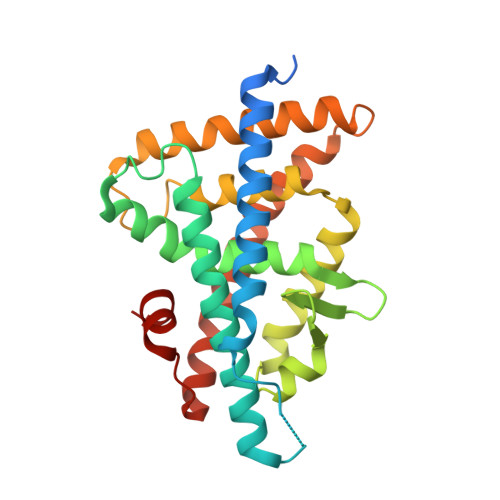Structure-guided design of N-phenyl tertiary amines as transrepression-selective liver X receptor modulators with anti-inflammatory activity.
Chao, E.Y., Caravella, J.A., Watson, M.A., Campobasso, N., Ghisletti, S., Billin, A.N., Galardi, C., Wang, P., Laffitte, B.A., Iannone, M.A., Goodwin, B.J., Nichols, J.A., Parks, D.J., Stewart, E., Wiethe, R.W., Williams, S.P., Smallwood, A., Pearce, K.H., Glass, C.K., Willson, T.M., Zuercher, W.J., Collins, J.L.(2008) J Med Chem 51: 5758-5765
- PubMed: 18800767
- DOI: https://doi.org/10.1021/jm800612u
- Primary Citation of Related Structures:
3FAL - PubMed Abstract:
A cocrystal structure of T1317 (3) bound to hLXRbeta was utilized in the design of a series of substituted N-phenyl tertiary amines. Profiling in binding and functional assays led to the identification of LXR modulator GSK9772 ( 20) as a high-affinity LXRbeta ligand (IC 50 = 30 nM) that shows separation of anti-inflammatory and lipogenic activities in human macrophage and liver cell lines, respectively. A cocrystal structure of the structurally related analog 19 bound to LXRbeta reveals regions within the receptor that can affect receptor modulation through ligand modification. Mechanistic studies demonstrate that 20 is greater than 10-fold selective for LXR-mediated transrepression of proinflammatory gene expression versus transactivation of lipogenic signaling pathways, thus providing an opportunity for the identification of LXR modulators with improved therapeutic indexes.
Organizational Affiliation:
GlaxoSmithKline Research and Development, Research Triangle Park, North Carolina 27709, USA.

















